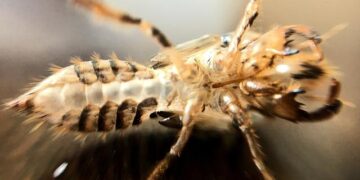Newly Identified Carnivorous Plant Captivates Scientists
Introduction to the Discovery
In an exciting development for botanical studies, researchers have unveiled a remarkable carnivorous plant species, adding a new facet to our understanding of these fascinating organisms. This discovery sheds light on the incredible diversity found in nature and emphasizes the ongoing need for exploration and research in our environment.
The Unique Characteristics of the New Species
This newly documented species boasts extraordinary traits that distinguish it from its relatives. Characterized by its large size and specialized structures for trapping prey, this plant demonstrates an exceptional adaptation that allows it to thrive in nutrient-poor soils. Its mechanisms for capturing insects not only serve as nourishment but also illustrate a complex evolutionary strategy.
Adaptive Mechanisms
The innovative trapping methods employed by this carnivorous plant include beautiful variations like modified leaves that lure unsuspecting insects. Once prey approaches, they are ensnared by sticky surfaces or rapid movements—similar to how Venus flytraps operate, yet distinct enough to highlight this new species’ unique adaptations.
Ecological Importance
Understanding such plants is vital not just from a scientific curiosity standpoint but also due to their ecological significance. These plants contribute significantly to biodiversity and offer insights into ecosystems’ health where they reside. Reports estimate that there are over 600 different types of carnivorous plants globally, each playing specific roles within their habitats.
Conservation Challenges
Amidst their allure, many carnivorous plants face serious threats from habitat loss caused by human activities such as deforestation and urbanization. Preserving these unique species is crucial; conservationists emphasize ensuring protection measures are enacted based on thorough scientific research demonstrating their ecological roles.
Current Research Trends
Recent studies indicate heightened interest in researching these captivating organisms amongst botanists worldwide driven by increasing awareness of biodiversity’s critical role in ecosystem function. For instance, knowledge gained from studying their predatory behaviors has implications extending beyond botany—into fields such as medicine and environmental science whereby natural insect traps can be leveraged against pest infestations without chemical inputs.
Examples of Culinary Potential
Moreover, scientists are exploring potential culinary uses stemming from these exotic plants; certain varieties have sparked interest among chefs looking for novel ingredients that provide both visual appeal and distinctive flavors while promoting sustainability efforts through local sourcing.
Conclusion: A Call For Continued Exploration
As we continue unearthing new species within the botanical realm—from giant carnivores nestled away in tropical forests—to delicate chalice orchids hidden among mountain mists—each contributes uniquely towards enriching our planet’s biodiversity mosaic. Ongoing efforts directed at understanding unfamiliar flora enables better conservation strategies essential for safeguarding our natural heritage against looming threats posed primarily through climate change.































